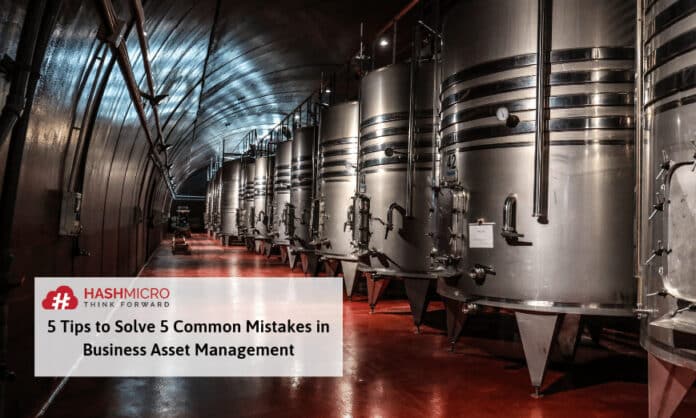Business asset management is a coordinated and systemic activity and practice that organizes the assets and the system of the asset including the performance, risks, and cost during the life cycle of the asset that affects the company’s goal achievement.
From that definition, assets are divided into several types (physical, financial, human resource, information, and intangible assets. There are a lot of troubles that often disturb the management of these assets and make them inefficient.
Therefore, this article will discuss the solution for five common, yet, significant problems in asset management, specifically the physical asset.

Table of Content:
Table of Content
Not Listing the Assets
Some companies do not take business asset management seriously. It is considered to be unimportant or done negligently whereas it is totally the opposite.
Listing all assets that a company has is critical in order to execute efficient asset management. If one fails to do so, the attempt to manage the assets will be futile. So, there are some steps that a company must take before setting up strategies to manage asset
- List all the assets that a company owns and verify the list in the field.
- Plan the asset management based on the requirement of ISO 550001 about asset management
- Establish evaluation criteria for the assets to determine whether the assets can support the company in achieving its goals
- Develop and apply the management process of configuration to ensure the asset management is still efficient in spite of any changes in the future
Low or Over Maintenance
During the life cycle of the asset, companies must have felt impeded due to troubles in assets. One of the causes of the problems originates from low- or over-maintenance. Over-maintenance can cause an inapt business asset management because,
- It spends too much expenses on unnecessary maintenance. Yes, in this case, money can loosely determine whether the management works properly or not.
- A high frequency of maintenance does not ensure that the asset won’t have any issues in the future. If the worst scenario happens, the company will not only lose money for over-maintenance but also for unexpected failure.
Meanwhile, opting for low maintenance isn’t always the best choice. Asset preservation can be costly, which leads some companies to neglect, postpone, or choose minimal maintenance services. They often fail to allocate adequate funds for proper maintenance.
This treatment will definitely result in bad asset performance. The reparation of the asset that has reached its worst condition due to lack of proper maintenance will cost more than regular maintenance. Also, there is a possibility that the asset can not be used anymore.
To solve it, start with critical assets and determine what kind of maintenance it needs. Then, decide the required resources (finance and staff) for the maintenance. Finally, make sure that those who are responsible for the maintenance have been professionally trained.
Improper Asset Use
It’s not uncommon that companies have little knowledge of the maximum capacity of the assets and use it with no consideration to optimize their life cycle. In reality, utilizing the asset below or beyond its capacity affects its life cycle.
Therefore, companies must use the assets according to the instructions, and understand the asset over-capacity damage, and if companies can not operate with the asset’s maximum capacity, they should prepare for risk mitigation.
Unprepared for Risk Management
Good asset management is the management that not only organizes asset operation and its maintenance but also mitigates risk if unexpected troubles occur.
What we mean by risk is the consequences of business asset treatment. So, to mitigate the risk, companies must 1) make assessments and identification, and 2) execute the management and control. Follow the risk management model as stated in ISO 31000, which in short includes:
- Understanding the context
- Problem assessment: identification, analysis, and evaluation
- Problem-solving
- Monitoring and reviewing
Related article: Tips on Risk Management in Construction
Not implementing an asset management system
Recently, asset management software has become quite popular in many industries because it automates the management of tasks. The system has so many features that can control asset use, schedule maintenance, value and expense tracking, and many more.
Some software offers asset management features in one package which can be customized based on what the company needs. The software also functions to prolong the life cycle of the asset business.
Mistakes that are common here are companies do not implement this system for so many reasons. Some do but they do not install all the features they need. It is better for companies to spend on a costly yet robust system rather than having to spend additional costs because the cheap system complicates your work.
Moreover, if a company has implemented the right system, the management should also train the human resources to use the system correctly and avoid technical errors.
Conclusion
Business asset management, encompassing the concept, execution, and disposal, aims to optimize the asset life cycle in a company. By focusing on the source of problems in business assets, companies can arrange better risk mitigation and improve their asset performance management.
Experience firsthand how effective asset management can be with a free demo by HashMicro.


































